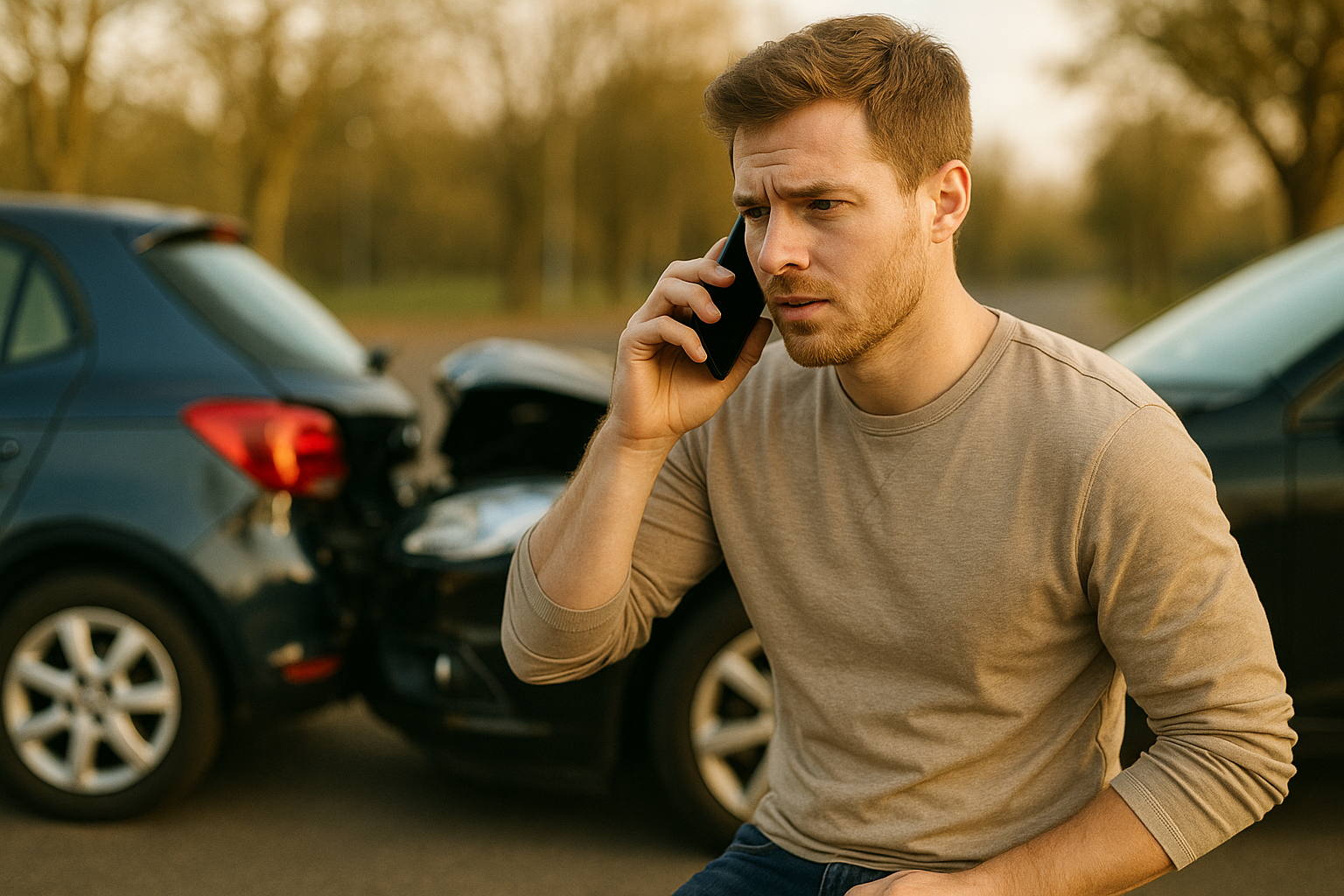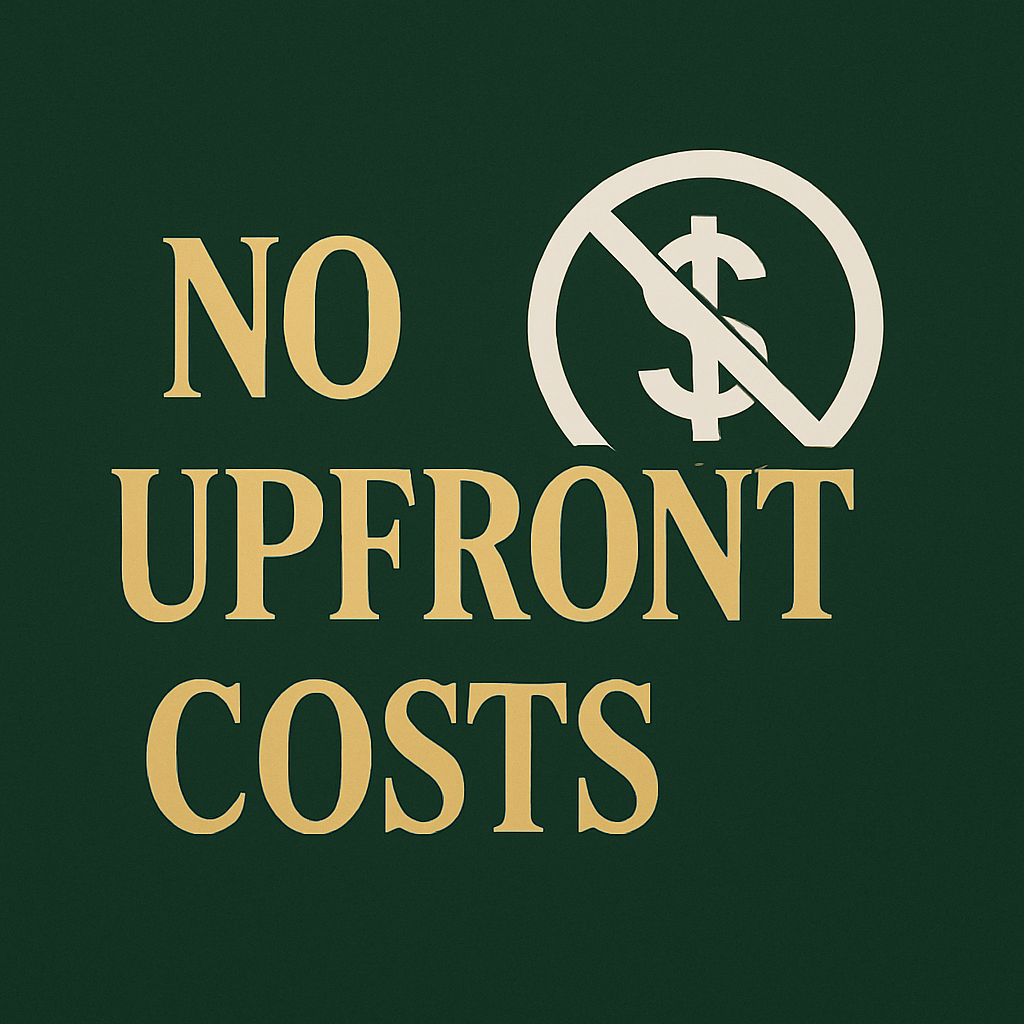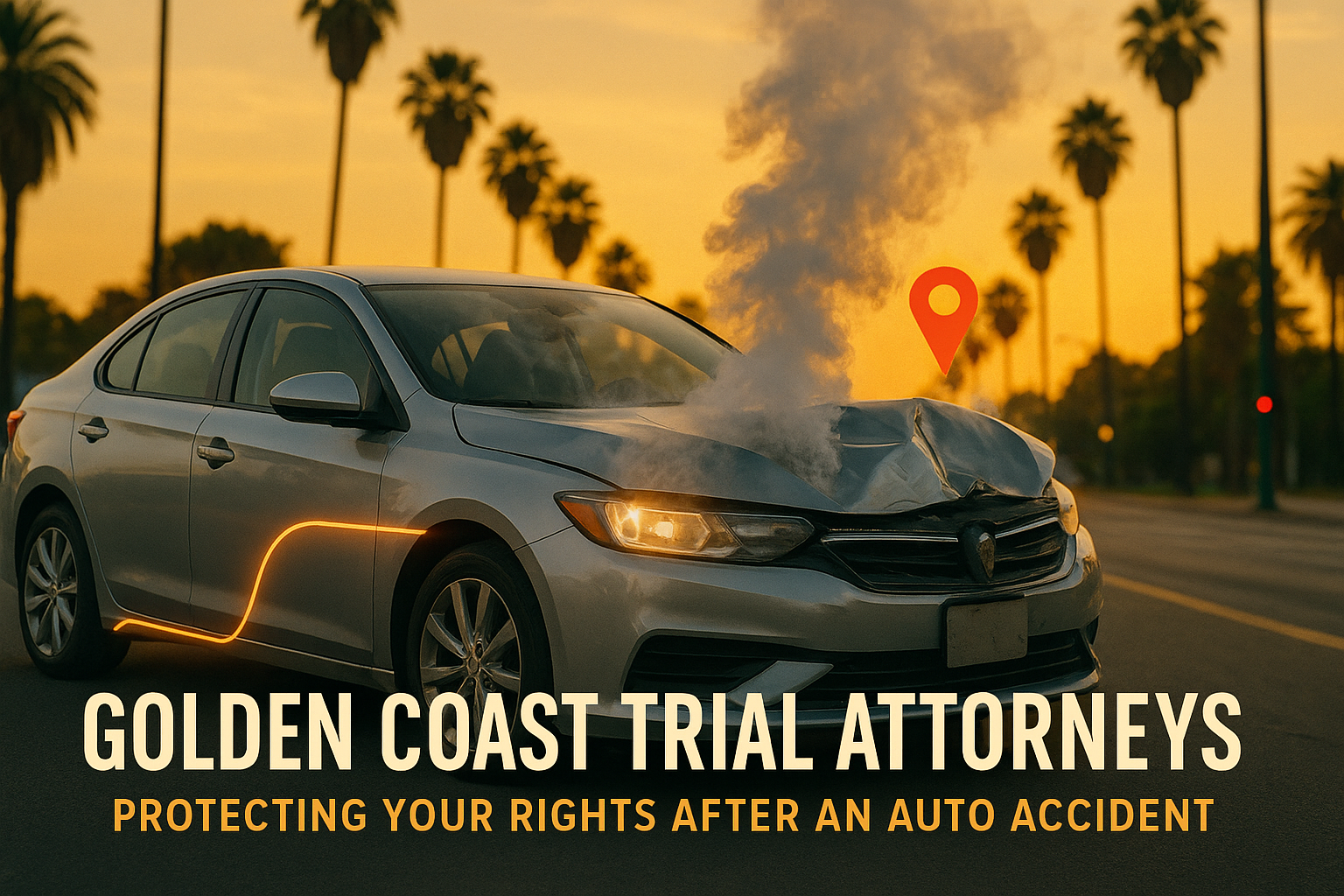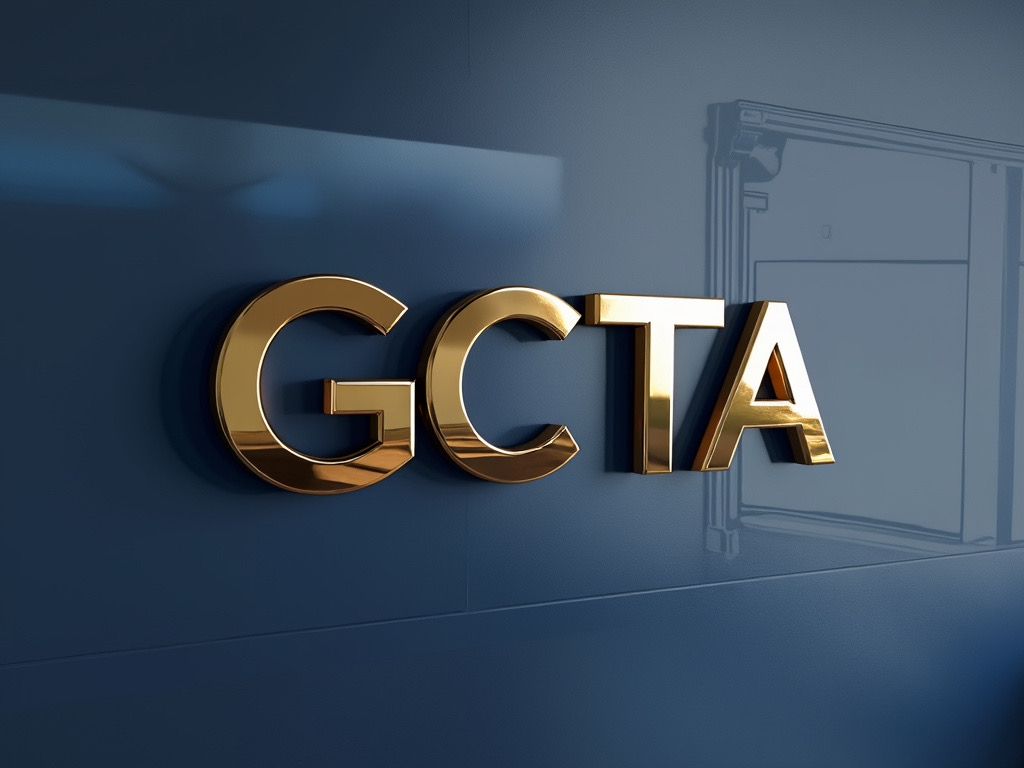
California Car Accident Guide: What to Do After a Crash and How a Personal Injury Lawyer Can Help
Being involved in a car crash can turn your life upside down in an instant. In the aftermath of an auto accident on California’s busy roads, you may feel shaken, confused, and overwhelmed. This comprehensive guide – created by the team at Golden Coast Trial Attorneys, PC – will walk you through exactly what to do after an auto accident, explain why hiring a car accident attorney can protect your interests, and outline key information on accident types, common injuries, compensation, and more. We blend professional legal expertise with genuine empathy for what you’re going through. Our goal is to help you stay safe, protect your rights, and ultimately recover the full compensation you deserve after a California car accident.
What to Do After an Auto Accident
An auto accident is a jarring experience, but taking the right steps immediately can make all the difference for your health and your legal claim. Here’s what to do after a car accident in California:
- Stay Calm and Check for Injuries: Take a deep breath and assess yourself and your passengers for any injuries. Your safety is the top priority. If anyone is seriously hurt, call 911 right away for medical help. If you’re able, move to a safe area (like the road shoulder) out of the way of traffic, and turn on hazard lights to prevent further incidents.
- Call the Police (If Needed): In California, it’s advisable to call the police or highway patrol to the scene, especially if there are injuries or significant vehicle damage. Officers will secure the scene and create an official accident report. This report can be important later for insurance and legal purposes. Even in minor fender-benders, you can still request a police report for an objective record of what happened.
- Gather Information and Evidence: Exchange information with the other driver(s) involved. Get names, phone numbers, driver’s license numbers, vehicle license plate numbers, and insurance details. If there are witnesses, politely ask for their contact information as well. Use your phone to take photos or videos of the accident scene – vehicle damage, skid marks, traffic signs, the surrounding area, and any visible injuries. This evidence can be crucial in supporting your claim later. (Tip: try to take pictures from multiple angles and distances to capture the full scene.)
- Do Not Admit Fault: Be courteous, but avoid apologizing or saying the accident was your fault – even if you feel you might be to blame. Admitting fault (even a simple “I’m sorry”) can be used against you. It’s best to stick to the facts when talking to the other driver or police. For example, you can ask if they are okay or need help, but don’t say “I didn’t see you” or assume responsibility for the crash. Fault can be complex and is often determined after a full investigation, so leave that conclusion to the experts.
- Seek Medical Attention: If you have any pain or suspect you’re injured, see a doctor as soon as possible. Some injuries (like whiplash, concussions, or internal injuries) may not be obvious right away due to adrenaline. A medical professional can check you for hidden injuries and document your condition. This documentation links any injuries to the accident, which is important if you pursue a personal injury claim. Prompt treatment also helps you heal properly. Even if you felt “fine” at the scene, get a check-up within a day or two to be safe.
- Report the Accident: California law requires that you report a traffic accident to the DMV within 10 days if anyone is injured or killed, or if property damage exceeds $1,000. This is done by submitting an SR-1 form (your insurance company or attorney can assist with this). Filing this report is in addition to any police report – you must still report to DMV to avoid potential license suspension. Also notify your insurance company of the accident as soon as reasonably possible, as most policies require prompt reporting.
- Call Golden Coast Trial Attorneys, PC: After you’ve handled immediate concerns, contact an experienced personal injury lawyer to protect your rights. The sooner you involve an attorney, the better they can preserve evidence and advise you on pitfalls to avoid. Golden Coast Trial Attorneys, PC offers free consultations for accident victims – call 833-9LAWNOW to speak with a knowledgeable California injury attorney about your case. We can guide you on the next steps, deal with insurance adjusters on your behalf, and help ensure you don’t say or do anything that might hurt your claim. While you focus on recovering, our attorneys will focus on protecting your legal interests.
Taking these steps after a car accident will safeguard your well-being and strengthen any future claim you pursue. It’s a difficult time, but you don’t have to go through it alone – help is available.


Why You Should Hire an Attorney Instead of Handling a Claim Alone
You might be wondering if you really need a lawyer after a car accident. Couldn’t you just handle the insurance claim yourself? It may be tempting to deal directly with insurance companies, but there are important reasons why hiring a car accident attorney is highly beneficial for injury victims. Insurance companies deal with claims every day, and unfortunately, their goal is often to pay out as little as possible – even if that means you don’t get fully compensated. Here’s why working with a personal injury lawyer can make a big difference in the outcome of your claim:
- Protecting Your Rights Against Insurance Tactics: Insurance adjusters are trained to minimize or deny claims. They might ask leading questions or pressure you into a quick, low settlement. An experienced personal injury lawyer serves as your advocate – communicating with the insurer so you don’t fall into any traps. Your attorney knows the tactics insurance companies use to reduce payouts and will counter them to protect your rights and interests.
- Accurate Valuation of Your Claim: One of the biggest pitfalls in handling a claim alone is not knowing what your case is truly worth. Attorneys have the expertise to calculate all your damages – not just the obvious medical bills. This includes future medical needs, lost earning capacity, and intangible losses like pain and suffering. Experienced lawyers also draw on jury verdicts and settlement data from similar cases to gauge the fair value of your claim. In fact, the insurance industry’s own research shows that people with legal representation receive settlements about 3.5 times higher on average than those who settle on their own. Simply put, a seasoned accident attorney will ensure you don’t unknowingly settle for far less than you deserve.
- Negotiation Power and Legal Knowledge: Personal injury attorneys are professional negotiators. They know how to build a strong case using evidence, and they won’t be intimidated by insurance company tactics. If you go it alone, you might feel pressured to accept the first offer. A lawyer, however, can push back and negotiate aggressively for a better settlement. They also understand California injury laws and the legal process, so they’ll handle all the paperwork, filings, and legal deadlines for you. If the insurance company refuses to offer a fair amount, your attorney can file a lawsuit and take the fight to court – a move that shows the insurer you mean business.
- Contingency Fee – No Upfront Cost: Most California personal injury lawyers (including Golden Coast Trial Attorneys, PC) work on a contingency fee basis. This means you pay nothing upfront and no legal fees at all unless we win compensation for you. This arrangement allows you to get quality legal help without added financial stress. It also incentivizes your attorney to maximize your compensation, since their payment is a percentage of your recovery. Essentially, we only get paid when you get paid – our interests are aligned with yours.
- Peace of Mind While You Heal: Finally, hiring a lawyer lets you focus on what truly matters – your recovery and well-being. After a car crash, you should be attending medical appointments and resting, not juggling calls with insurance adjusters or stressing over legal forms. When Golden Coast Trial Attorneys handles your claim, we take that burden off your shoulders. We will keep you informed about your case, but we handle the heavy lifting of investigating the accident, gathering records, talking to witnesses, and fighting for your compensation. This compassionate support can bring peace of mind during a difficult time.
Bottom line: Having a skilled personal injury lawyer on your side evens the playing field and greatly increases your chances of a full and fair settlement. It’s one of the best decisions you can make after an auto accident to protect yourself and your family’s future.
Types of Auto Accidents
Trial Attorneys, PC has experience handling all types of auto accidents, including those where fault might initially seem unclear. Here are some common types of car accidents we see in California:
- Rear-End Collisions: One of the most frequent accident types, rear-end crashes happen when one vehicle hits the back of another. This often occurs at stoplights, stop-and-go traffic, or on highways when following too closely. Even at moderate speeds, rear-end impacts can cause whiplash and other injuries to the neck and back due to the sudden jolt.
- T-Bone or Side-Impact Crashes: A “T-bone” accident happens when the front of one vehicle slams into the side of another, forming a “T” shape. These typically occur at intersections – for example, if a driver runs a red light or stop sign and hits the side of a crossing vehicle. Side-impact collisions can be very serious, as the sides of cars have less protection. They often result in injuries to drivers or passengers on the struck side, ranging from broken bones to head injuries.
- Sideswipe Accidents: Sideswipes happen when two vehicles traveling next to each other make contact along their sides. This can occur during lane changes on a highway or on multi-lane roads if one driver drifts or doesn’t see the other in their blind spot. A sideswipe might result in just scraped paint, or it can lead to a loss of control at high speeds. These accidents sometimes escalate into spin-outs or secondary crashes if the drivers can’t regain control.
- Head-On Collisions: A head-on crash is when the front ends of two vehicles collide while traveling opposite directions. These are less common but often the most devastating type of accident due to the force involved when both vehicles are moving toward each other. Head-on collisions often occur due to wrong-way driving, passing on two-lane roads, or loss of control that sends a car over the center line. Severe injuries (like traumatic brain injuries, internal injuries, or fatalities) are tragically frequent in head-on crashes.
- Rollover Accidents (Flipped Vehicles): A rollover accident means a vehicle tips onto its side or roof, or flips over completely. Certain vehicles (like SUVs or trucks with higher centers of gravity) are more prone to rollovers, especially during sharp turns or high-speed swerves. Rollovers can happen after a collision (e.g. one car clipping another can trigger a flip) or from losing control (over-correcting steering, hitting a curb, etc.). Being trapped in an overturned car is terrifying and often causes serious injuries such as head trauma, crushed limbs, or spinal injuries.
- Multi-Vehicle Pileups: Especially on busy freeways or in chain-reaction scenarios, more than two vehicles can be involved in a crash. Multi-vehicle accidents (for example, a three-car pileup in heavy traffic or a series of collisions in foggy conditions) are complex in terms of determining fault. They can involve combinations of rear-ends, side impacts, etc., happening in quick succession.
- “Fender-Benders” (Minor Accidents): Not every crash is catastrophic. Fender-benders are minor collisions, often at low speeds, that result in little vehicle damage (like a small dent or scratched bumper) and sometimes no obvious injuries. Common examples include parking lot accidents or bumping the car ahead in stop-and-go traffic. Don’t be fooled by the term “minor,” though – even a low-speed impact can cause soft tissue injuries or whiplash. Always take a fender-bender seriously enough to exchange information and monitor for any pain later.
- Total Loss Crashes: This isn’t a separate collision style, but rather refers to the severity of damage. A “total loss” means the car is so badly damaged that it’s not worth repairing (the insurance deems it a total loss). High-speed crashes, whether they are severe rear-ends, T-bones, or head-ons, often result in vehicles being totaled. The occupants of such vehicles may suffer severe or catastrophic injuries due to the force involved.
Accidents can happen anywhere: busy intersections, highways (like the I-5 or 101), winding mountain roads, parking lots, or even quiet residential streets. Each environment poses its own risks – for instance, intersections see a lot of T-bones, highways see high-speed rear-ends or sideswipes, and parking lots witness low-speed bumps. No matter where or how your car crash happened, Golden Coast Trial Attorneys can help. It’s important not to assume you have no case even if you think you were partially at fault. California follows a pure comparative negligence rule, which means you can still recover damages even if you were up to 99% at fault for an accident. In other words, even if you made a mistake, you may still be entitled to compensation for the portion of the blame the other party bears. Our attorneys will analyze the facts, determine all contributing factors, and fight for your rights – even in accidents where liability isn’t black-and-white.


California Auto Accident Statistics and History
California’s roadways see hundreds of accidents every single day. In fact, this state – home to nearly 39 million people and over 28 million registered vehicles – has more vehicles on the road than any other state. With so many drivers, it’s not surprising that there are roughly 680 crashes per day on average in California. These collisions range from minor fender-benders to major multi-car wrecks, and they collectively impact thousands of lives daily.
To put things in perspective, California consistently has one of the highest total numbers of traffic accidents and fatalities among all U.S. states. In 2022, there were 4,428 traffic fatalities in California (a slight decrease from 4,513 in 2021). That means on average, tragically, over 12 people lose their lives every day in California car crashes. Tens of thousands more suffer injuries each year. While vehicles today are safer than decades ago (thanks to innovations like seat belts, airbags, and improved vehicle design), the sheer volume of traffic in California – along with modern hazards like smartphone distraction – keeps the number of accidents alarmingly high.
Historical trends: Over the long term, fatal accident rates per mile driven have actually improved (drivers in the 2020s are statistically safer than in the 1970s, for example), largely due to better safety technology and public awareness. However, recent years have seen new challenges. During the COVID-19 pandemic lockdowns of 2020, California saw a notable drop in car accidents – about a 25% decrease in total crashes from 2019 to 2020 due to fewer vehicles on the road. But when normal traffic resumed, collisions surged again – there was roughly a 19.6% increase in crashes from 2020 to 2021 as commuters returned and roads filled back up. This rebound in accidents erased the temporary safety gains and even overshot previous levels in some areas.
Another interesting fact: certain regions in California consistently see more accidents. Major urban centers like Los Angeles and San Diego have some of the highest accident frequencies in the state (unsurprising given their dense traffic). Additionally, specific factors remain a concern – for example, a significant percentage of accidents involve speeding, and a substantial number of fatal crashes (nearly 30%) involve an impaired driver (DUI). California has implemented many safety measures, from anti-DUI campaigns to improved road engineering, but accidents remain a daily reality.
Overall, these statistics and historical trends underscore why it’s so important to know what to do after a crash and to have experienced legal guidance. With thousands of crashes a year in California, Golden Coast Trial Attorneys has the background and context to understand any accident scenario. We stay up-to-date on traffic safety data and use that knowledge to advocate for our clients’ rights.
Common Injuries from Car Accidents
Car accidents can cause a wide range of injuries – from minor aches that heal in days to catastrophic injuries that change a victim’s life forever. Below are some of the most common injuries our California car accident clients experience, and what they mean:
- Catastrophic Injuries: This term refers to severe, life-altering injuries that often have permanent effects. Examples include paralysis (such as from a spinal cord injury), severe traumatic brain injuries, or debilitating organ damage. Catastrophic injuries typically require extensive medical treatment and long-term care. They can prevent someone from working or independently caring for themselves. In legal terms, these injuries often justify significant compensation because of their profound impact on the victim’s quality of life.
- Wrongful Death: When a person tragically loses their life as a result of an accident, surviving family members may pursue a wrongful death claim. While not an “injury” to the person (since they have passed away), it is a devastating outcome of some crashes. Wrongful death cases seek compensation for the losses suffered by the family – such as funeral expenses, loss of financial support, and the emotional trauma of losing a loved one. No amount of money can ever replace a life, but these claims help families cope with the unexpected costs and hold the responsible parties accountable.
- Amputation or Loss of Limb: The force of a collision can result in traumatic amputation (an arm, leg, finger, etc., severed during the crash) or necessitate surgical amputation later due to irreparable damage. Losing a limb is obviously a catastrophic injury – it leads to permanent disability and requires rehabilitation, prosthetics, and adjustments to nearly every aspect of life. Car accidents involving motorcycles, pedestrians, or high-speed impacts are more likely to cause such injuries.
- Back and Spinal Cord Injuries: The human spine is vulnerable in car crashes, and back injuries are extremely common. They range from relatively mild muscle strains and bulging discs to severe spinal cord damage. A herniated disc or fractured vertebra can cause intense pain and mobility issues. In the worst cases, a spinal cord injury can cause partial or total paralysis (paraplegia or quadriplegia), permanently altering the victim’s life. Even “minor” back injuries can lead to chronic pain that affects daily activities and the ability to work.
- Burn Injuries: Vehicle fires or explosions are less common, but when they occur, they can cause serious burn injuries. Burns might also result from contact with hot fluids, chemicals, or friction during a crash. Severe burns (second or third-degree) can lead to intense pain, scarring, and risk of infection. They often require specialized treatment like skin grafts. Beyond physical pain, burns can cause emotional trauma due to disfigurement.
- Traumatic Brain Injury (TBI): A TBI is caused by a violent blow or jolt to the head, which frequently happens in car crashes (for example, striking your head against the steering wheel, window, or being hit by debris). TBIs range from concussions (mild traumatic brain injuries) to severe brain damage with bleeding or swelling in the brain. Symptoms can include headaches, confusion, memory loss, mood changes, and in severe cases, lifelong cognitive or motor impairment. Brain injuries are often particularly frightening because they may not be immediately visible – someone might “seem okay” at first, only to develop serious symptoms hours or days later.
- Whiplash and Neck Injuries: Whiplash is a very common injury in rear-end collisions, even at low speeds. It occurs when the head and neck are thrown forward and back rapidly, like the cracking of a whip. This motion can strain or sprain the neck muscles and ligaments. Symptoms of whiplash include neck pain, stiffness, headaches, and sometimes tingling in the arms. While whiplash is considered a “soft tissue” injury (not visible on X-rays), it can be quite painful and occasionally leads to long-term discomfort. Most people recover with proper treatment (rest, physical therapy), but it’s important to take it seriously and get diagnosed.
- Soft Tissue Injuries and Bruising: Aside from whiplash, car accidents commonly cause other soft tissue injuries – meaning damage to muscles, tendons, or ligaments. Examples include sprained ankles, pulled muscles, or tendon injuries from the sudden force of impact. You might also see extensive bruising (contusions), often from the seatbelt or hitting parts of the car interior. While these injuries might be considered moderate, they can still be painful and limit mobility during recovery. Soft tissue injuries sometimes take a day or two to manifest full pain, which is why medical check-ups are wise even if you feel okay right after the crash.
- Head Injuries (External and Internal): Not every head injury is a severe TBI. Car accidents can also cause cuts, lacerations, or bruises on the head or face from shattered glass or impact with hard surfaces. People commonly get forehead or scalp lacerations, black eyes, or broken noses in crashes. These injuries can bleed a lot (scalp wounds especially) and may require stitches or other treatment. Even if you don’t have obvious external wounds, always be mindful of concussion signs after a blow to the head – dizziness, nausea, or confusion – and seek medical attention if any symptoms arise.
Every car accident injury, no matter how minor or major, deserves proper medical care and attention. At Golden Coast Trial Attorneys, we have seen firsthand how something that seems minor (like a sore neck) can turn into a chronic problem, and how catastrophic injuries require a lifetime of support. We approach every case with compassion for the injured person. Part of our job is to clearly document all injuries and losses so that you receive appropriate compensation to cover medical bills, ongoing care, lost income, and the human impact of your pain and suffering.


Understanding Vehicle Accident Compensation
If you’ve been hurt in a car accident due to someone else’s negligence, you have the right to seek financial compensation (damages) for your losses. But how exactly is accident compensation calculated? In a personal injury claim, damages generally fall into a few main categories:
- Medical Expenses: This includes all medical costs related to your injury – emergency room bills, hospital stays, surgeries, doctor visits, medication, physical therapy, medical devices, rehabilitation, and any future medical treatment you’ll need. It’s crucial to not only account for the bills you’ve already accumulated, but also forecast future medical needs if your injuries require ongoing care. For example, if you suffered a spinal injury, your claim should include not just the initial surgery but also the cost of future physical therapy or any future surgeries or long-term medications.
- Lost Wages and Income: If your injuries force you to miss work, you can claim the income you lost during recovery. This covers not just regular wages but also lost overtime, bonuses, or vacation days used. If the injury has longer-term effects on your ability to earn (for instance, if you have a disability or ongoing impairments), you may also claim “loss of earning capacity.” That means compensation for the income you would have earned in the future were it not for the accident. Our attorneys often work with financial experts to calculate the projected impact of serious injuries on a client’s career and earnings.
- Pain and Suffering: Not all losses are purely financial. Pain and suffering damages compensate you for the physical pain and emotional distress caused by the accident and your injuries. Car crashes can be traumatic – you might experience ongoing pain, limitations in activities you enjoy, sleep problems, depression, anxiety, or PTSD-like symptoms after a severe accident. While there’s no exact price tag on these intangible losses, lawyers and insurance companies use their experience (and sometimes past case comparisons) to put a reasonable monetary value on pain and suffering. The more severe and long-lasting your injury, generally, the higher the pain and suffering compensation. We ensure that your claim fully reflects how the injury has affected your quality of life – whether it’s missing out on hobbies, the strain on your family relationships, or just the day-to-day anguish you’ve endured.
- Property Damage: This covers the cost to repair or replace your vehicle and any other property damaged in the accident (for example, a smartphone or child’s car seat in the car). Vehicle damage is usually handled under the property damage portion of the insurance claim. If your car was a total loss, you’re typically entitled to the pre-accident market value of the vehicle. We can help ensure the insurance company offers a fair valuation for your car. While Golden Coast Trial Attorneys primarily focuses on injury claims, we can also advise you on the property damage aspect or handle it as part of an overall settlement.
- Other Damages: Depending on the case, there may be additional damages. For instance, if you have a permanent injury, you might need compensation for home modifications (like wheelchair ramps) or in-home care. In wrongful death cases, damages include funeral expenses and loss of financial support and companionship for the family. In rare situations where the at-fault party’s behavior was especially egregious (e.g. a drunk driver with extreme recklessness), punitive damages might be pursued to punish that conduct – though punitive damages are less common in routine accident cases.
Calculating these damages accurately is a complex process, and that’s where our expertise comes in. Golden Coast Trial Attorneys, PC will thoroughly assess every impact the accident has had on your life. We collect medical records and bills, speak with your doctors about future prognosis, gather proof of income and missed work, and even talk with you and your family about the less tangible ways the injury has affected you. Our attorneys use legal tools and experience to make sure nothing is overlooked – we often utilize insights from past jury verdicts and settlements for similar injuries to determine a fair range for pain and suffering. We may bring in economists or life-care planning experts for complex injuries to pinpoint future costs. Our goal is to present a compelling, evidence-backed demand to the insurance company (or to a jury, if we go to trial) that fully and fairly values your entire loss.
Insurance companies, as mentioned, will often start with a low offer, hoping you’ll settle cheap. But with our team on your side, we’ll negotiate firmly for full compensation. If the insurer won’t budge, we are prepared to take the case to court and let a jury decide. Our track record includes numerous successful settlements and verdicts because we refuse to let clients be short-changed. When we say “full and fair value,” we mean accounting for everything – your past, present, and future losses – so you have the financial support needed to recover and move forward after an accident.
Inside Knowledge From Former Insurance and Corporate Defense Attorneys
One of the unique advantages of working with Golden Coast Trial Attorneys, PC is our team’s inside knowledge of how insurance companies and big corporations defend against injury claims. Our firm includes attorneys who previously worked as insurance defense lawyers – the very lawyers hired by insurance companies to minimize payouts – as well as attorneys with backgrounds defending corporate clients. We’ve since switched sides to fight for the injured victims, but we carry with us invaluable insight from our defense days.
Why does this matter to you? Because we know the playbook that insurance companies use. We’ve been in their shoes, so we understand their strategies from the inside out. For example, having worked on the defense side, we know the subtle ways an insurer might try to pin fault on the victim or downplay an injury. We know the common arguments they make to a jury to reduce damages. We’re familiar with the internal value calculators and “settlement authority” limits insurance adjusters use behind closed doors. This means we can often anticipate the next move from the defense and counter it before it gains traction.
Our former defense attorneys will, for instance, prepare your case in a way that neutralizes typical insurance arguments. If we know the insurance company might claim your injury was pre-existing, we’ll gather clear medical evidence to prove how the accident directly caused your condition or aggravated any older injury. If we expect they’ll argue you were partially at fault, we’ll be ready with accident reconstruction, witness statements, or expert testimony to solidify liability against the true at-fault party. Essentially, we build your case with the insurance company’s perspective in mind, strengthening every angle so their usual tactics don’t work.
Furthermore, our team’s experience in corporate defense means we’re very comfortable handling complex, high-stakes litigation. Big insurance companies and corporations have deep pockets and aggressive lawyers – but so do we. We are not intimidated because we’ve been on that side. Now our only mission is to use that insider knowledge to benefit you, the injured person seeking justice. We take pride in being shrewd negotiators and formidable trial attorneys who won’t back down. The defense knows that we know their tricks, which often leads them to offer a fair settlement rather than face us in court.
In summary, when you hire Golden Coast Trial Attorneys, you’re gaining a team with a 360-degree view of the legal battlefield. We bring the full weight of our experience – both plaintiff and defense – to maximize your advantage. It’s like having a guide who not only knows the road ahead, but also knows all the shortcuts and potential roadblocks along the way.


Call to Action
A car accident can throw your life into chaos, but you don’t have to navigate the aftermath on your own. If you or a loved one has been involved in an auto accident in California, let Golden Coast Trial Attorneys, PC help you through this difficult time. We offer a free, no-obligation consultation to evaluate your case, answer your questions, and explain your rights and options. When you speak with our team, you’ll find a compassionate listener who genuinely cares about your well-being, and a skilled professional ready to fight for your legal rights.
Time is critical after an accident – evidence can fade and insurance companies will be quick to act. So don’t delay: Call us today at 833-9LAWNOW (that’s 833-952-9669) to speak with an experienced California car accident attorney. You can also reach out through our website or visit our Los Angeles office. We’re available 24/7, and if you can’t come to us, we can arrange to come to you.
At Golden Coast Trial Attorneys, PC, our mission is to help accident victims get the justice and compensation they deserve. Let us put our expertise, dedication, and insider knowledge to work for you. Your job is to heal – our job is to handle everything else. Reach out now, and take the first step toward reclaiming your life after a car accident. We’re here to help you every step of the way.

